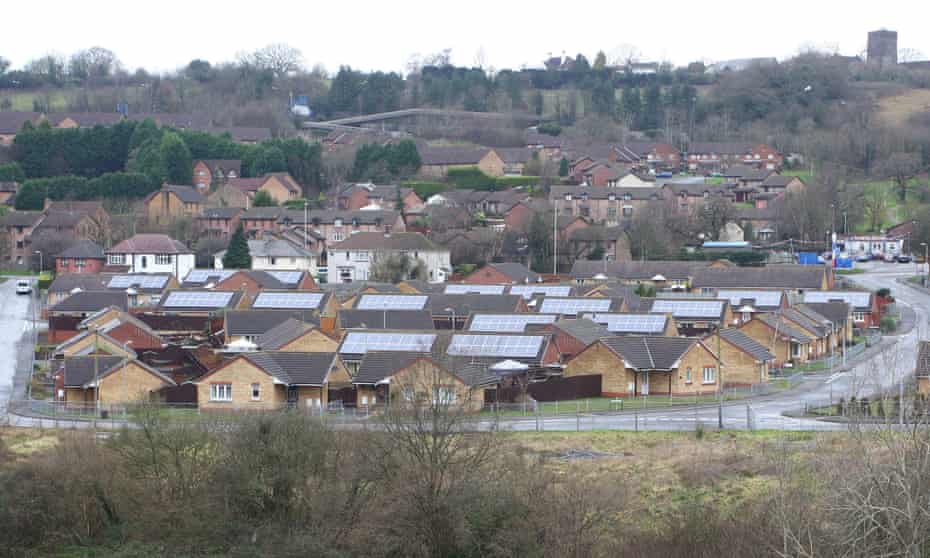The climate crisis is global, but councils can offer local solutions
With government support, councils can lead the way in generating clean energy, insulating housing and reskilling staff

At Cop26 this year, we’ll hear about diplomats and heads of state negotiating over targets, but when a river bank bursts or a storm hits, it’s our local councils that are left to clear up the mess. When Storm Frank lashed the north-east of Scotland over the new year of 2016, it was council binmen, engineers, housing officers, social workers and home carers who worked day and night mobilising volunteers to evacuate homes and find temporary accommodation for some 300 households.
In the weeks and months afterwards, Aberdeenshire council had to deal with a mile stretch of destroyed road, three washed-away footbridges, and damage to several bridges. This is on top of the clean-up operation and returning families to their homes. Despite financial assistance from the Scottish government, the council was left with a bill of around GBP15m. This is the less glamorous, but very real work, that goes into responding to climate change.
As we look to the future, the task facing council workers like me is to think how we make our homes and neighbourhoods more sustainable and more resilient, and maybe even fairer along the way.
Starting with our homes, badly insulated housing is responsible for 14% of the UK’s total emissions. It’s a real challenge to retrofit houses and other buildings so that energy is not leaking through roofs and walls. Leaving this to individual homeowners and landlords will result in a disparity between rich people, who can afford cavity wall and roof insulation, and poor people, who will freeze in poorly insulated homes when left unable to meet rising heating bills.
Councils are ideally placed to coordinate social housing resources, while in turn benefiting other households. Local authorities who have retained in-house maintenance teams could retrofit their own buildings – but also, through the enormous efficiencies of scale that a cross-sector project would bring, reduce the cost of making homes fuel-efficient and warm for all other property owners. If you’re going to put scaffolding up to retrofit one house, it’s cheaper to do the house next door at the same time. At the same time, councils would be reskilling their own workforce, while creating industry-standard apprenticeship schemes. These would train young people in the skills needed to succeed in the green economy.
At the community level, councils themselves are enormous users of energy, from lighting the streets to heating buildings and running fleets of vehicles, so they face a challenge in reducing their own reliance on fossil fuels. However, councils can be a key agent in addressing this.
Local councils could become generators of renewable energy, using council land and buildings to generate wind and solar power for their own and the wider community’s use. This could address issues of fuel poverty within their areas, at a time when the share of household budgets being spent on heating is on the rise. There are costs involved in setting up such schemes, but the benefits would be produced quickly.
Such municipal energy projects could act as a spur to public sector partners, linking community and commercial energy projects into councils’ schemes through local renewable energy grids, avoiding the high cost of relaying energy long distance through the National Grid. With every roof fitted with solar panels, and wind turbines installed on appropriate council land, communities come closer to achieving energy self-sufficiency – an aim attainable within a couple of decades.
The benefit could be amplified if these schemes are connected to procurement policies that support nearby businesses. For example, the Community Wealth Building strategy, launched last year by North Ayrshire council, ensures that much more council spending is retained in the local area.
Of course, to initiate these schemes, councils require government investment. But many of these schemes will repay that investment over a period of 10 to 15 years, through savings on energy bills, the benefits of reducing fuel poverty and an improved local economy. Councils will need to identify the skills required to make this transition, while also recognising that some workers need to be retrained. There will be few jobs for diesel truck mechanics when council fleets switch to electrical or green hydrogen vehicles. As future social housing is built with electrical or pump storage heating, the gas fitters and maintenance teams will need to learn new skills. By working with their employees and trade unions, councils can ensure that these transitions are fair to the current workforce, tenants, service users and council taxpayers.
With the right national government support and planning, councils can use their economic power as major employers as well as owners of infrastructure, property and land, and procurers of goods and services, to be the agents of genuinely just transitions.
